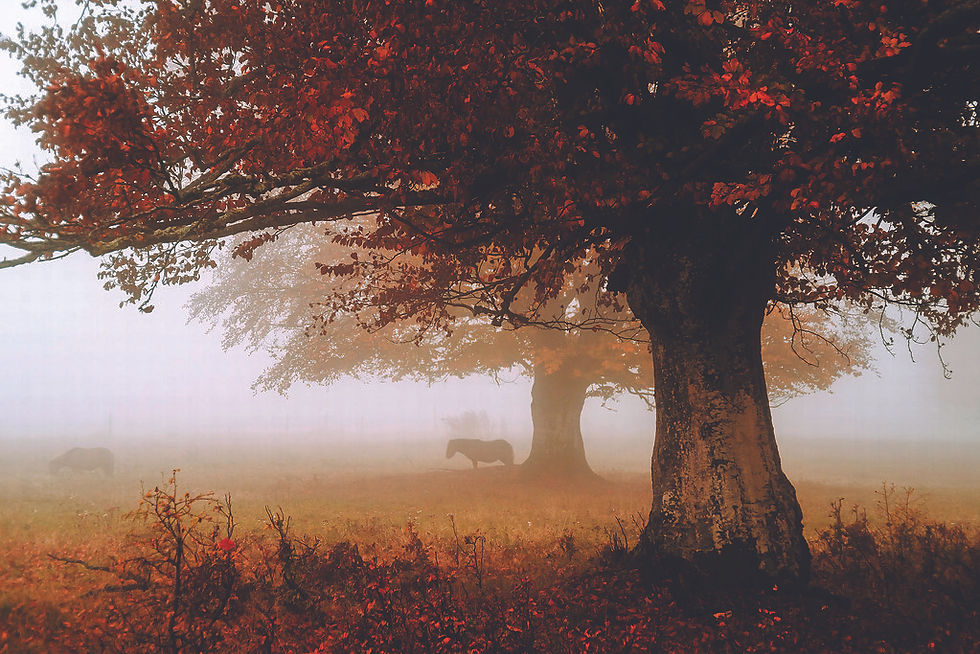Pavli Fair / Pavli vašar
- Анђела Петровски
- Apr 17, 2022
- 4 min read
A 111-year-old tradition in Turkey's Thrace: Pavli Panayırı (Pavli Fair)
When September comes, all of Thrace looks forward to the Pavli Fair, which is the oldest fair in Thrace dating back to the Ottoman Empire.
The Pavli Fair began in the Ottoman Empire in 1910 with the order of Sultan Abdulhamid II. Every year since then, people have looked forward to the annual event which takes place in September. Although the fair was canceled last year due to
Covid-19, this year was different as people gathered to mark the 111th Pavli Fair on September 9.
The purpose of the fair is to bring the locals together to celebrate their culture, history, and friendships. It reinforces unity among the people of Thrace.
Pavli is the old name of Pehlivankoy, the district in Turkey’s Kirklareli that hosts the fair.
Each year, thousands flock to the site between the Pehlivankoy Train Station and the Ergene river. The site is filled with sales counters, outdoor dining spots, and an amusement park.
When the fair begins, the surrounding villages turn into ghost towns.
Tourists from Turkey and abroad attend the fair as well. The Pavli Fair has around
ten thousand visitors. Villagers arrive in tractor-trailers that they prepare days before the fair. They construct a roof for their trailers using arched branches and tarpaulins.
The interior is decorated with traditional Turkish rugs, pillows, and blankets, and stocked with food. Years ago, people used to travel to the site in oxcarts.
Tractor-trailers are parked around the fair with a view of the amusement park.
In front of them, the fair unfolds.
Everyone, young and old alike, enjoy all kinds of Turkish food, beverages, music, and folk-dance demonstrations. People eat, dance, play sports and enjoy the rides at the amusement park.
Over 400 tradesmen join the fair to sell their products. People can purchase foodstuffs brought straight from the fields, clothes, ornaments and even stationery.
The Pavli Fair is the event for cherishing the Thracian tradition and culture, purchasing goods, and meeting friends and family.
Photos and text: Erhan Baycan
Biography
He was born in 1988 in Kurudere village of Kırklareli. He graduated from Kırklareli University Computer Programming and Anadolu University Photography and Cameraman Department. He started photographing in 2008. The same year marked the beginning of the journalism profession. He is the founder and board member of Kırklareli Photography and Cinema Art Association (KIFSAD). In 2012, he founded Alternative Media with 2 of his friends. Since then, they have been serving in the fields of newspaper, advertisement, digital printing and promotion under the roof of Alternatif Medya. He undertook the editorship of Trakya Magazine, which started its publication life in December 2017.
He has participated in many photography exhibitions, both locally and internationally. He concentrates his studies mostly on the Strandjas and the Balkan geography. The photo album "Autumn in Istranca", consisting of approximately 50 photographs, was published by the Trakya Development Agency in January 2013. A few years after starting photography, he embraced documentary photography. He still continues to work in this field.
Tradicija duga 111 godina u Turskoj Trakiji: Pavli Panayırı (Pavli Vašar)
Kada dođe septembar, cela Trakija sa nestrpljenjem očekuje Pavli vašar, najstariji vašar u Trakiji još iz vremena Osmanskog carstva.
Počeo u Osmanskom carstvu 1910. godine po nalogu sultana Abdulhamida II. Svake godine od tada, ljudi željno počekuju ovaj događaj koji se održava u septembru.
Iako je sajam prošle godine otkazan zbog Covid-19, ove godine je bilo drugačije jer su se ljudi okupili da obeleže 111. Pavlov sajam 9. septembra.
Svrha sajma je da okupi meštane da proslave svoju kulturu, istoriju i prijateljstva. On jača jedinstvo među narodom Trakije.
Pavli je staro ime Pehlivankoja, distrikta u turskom okrugu Kirklareli koji je domaćin sajma.
Svake godine hiljade hrle na lokaciju između železničke stanice Pehlivankoi i reke Ergene. Prostor je ispunjen prodajnim štandovima, restoranima na otvorenom i zabavnim parkom.
Kada počne vašar, okolna sela se pretvaraju u gradove duhova. Sajmu prisustvuju i turisti iz Turske i iz inostranstva. Pavli sajam ima oko deset hiljada posetilaca.
Seljani stižu u traktorskim prikolicama koje spremaju danima pre sajma. Oni konstruišu krov za svoje prikolice koristeći lučne grane i cerade.
Unutrašnjost je ukrašena tradicionalnim turskim ćilimima, jastucima i ćebadima i snabdevena hranom. Pre mnogo godina, ljudi su putovali do lokacije u volovskim zapregama.
Oko sajma su parkirane traktorske prikolice sa pogledom na zabavni park i sajam koji se pred njima odvija.
Svi, i mladi i stari, uživaju u svim vrstama turske hrane, pića, muzike i narodnih plesova. Ljudi jedu, plešu, bave se sportom i uživaju u vožnji u zabavnom parku.
Preko 400 trgovaca se pridružuje sajmu da prodaju svoje proizvode. Ljudi mogu da kupe namirnice donete direktno sa polja, odeću, ukrase, pa čak i kancelarijski materijal.
Pavlov sajam je manifestacija negovanja tračke tradicije i kulture, kupovine robe i susreta sa prijateljima i porodicom.
Photos and text: Erhan Baycan
Biografija
Rođen je 1988. godine u selu Kurudere u Kırklareli. Diplomirao je na kompjuterskom programiranju Univerziteta Kırklareli i na odseku za fotografiju Univerziteta Anadolu. Fotografijom je počeo da se bavi 2008. Iste godine počinje i novinarska profesija. Osnivač je i član upravnog odbora Kırklareli Photographi and Cinema Art Association (KIFSAD). 2012. godine osnovao je Alternative Media sa 2 svoja prijatelja. Od tada rade u oblastima novina, reklama, digitalne štampe i promocije pod krovom Alternatif Media. Preuzeo je uredništvo časopisa Trakia, koji je počeo da izlazi u decembru 2017.
Učestvovao je na mnogim izložbama fotografija, kako u zemlji tako i u inostranstvu. Svoje studije uglavnom koncentriše na Stranđaš i balkansku regiju. Foto-album „Jesen u Istranci“, koji se sastoji od oko 50 fotografija, objavila je Razvojna agencija Trakia u januaru 2013. Nekoliko godina nakon što se počeo baviti fotografijom, prihvatio se dokumentarne fotografije. I dalje nastavlja da radi na ovom polju.





































Comments